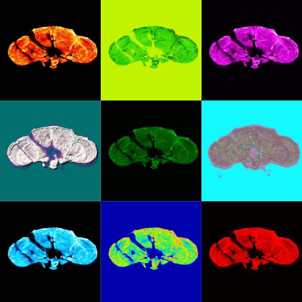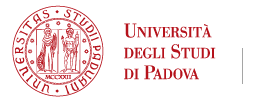
Spotlight: the Physiology, Genetics and Behavior Unit
Pubblicato il: 23.02.2022 17:09
A common research interest across the members of the Physiology, Genetics and Behavior Unit is the study of the processes that govern brain homeostasis. The goal is to untangle the key molecular pathways i.e. autophagy, mitochondrial dynamics, synaptic plasticity and inflammation, which regulate pivotal physiological functions for the organism. These pathways are then investigated in relationship with physiological processes such as circadian clock, sleep, movement, learning, memory and social interactions. At the same time, the interest of the research group is also directed towards the genetic and environmental factors that make these molecular pathways unfunctional in pathological conditions such as Parkinson’s disease and other neurodegenerative and neurological disorders.
The combination of in vitro, ex-vivo and in vivo approaches is particularly important to understand how specific cellular processes influence brain functionality and, if defective, contribute to the development and progression of brain diseases. In this frame, a plethora of ascending cellular models and organisms is utilized, spanning among murine and iPSC-derived cells, ex-vivo and in-vivo approaches in mouse (Mus musculus), zebrafish (Danio rerio) and fruit-fly (Drosophila melanogaster). Moreover, a strength of the Unit is the multidisciplinary background of the members, who integrate their scientific expertise in genetics (silencing or knock-out, gene knock-in, Crispr/Cas9 approaches), cell and molecular biology, biochemistry, neurophysiology (calcium imaging, synapse structure/function), imaging (electron and confocal microscopy), omics approaches for gene expression analysis (microarray, RNA-Seq) and for the screening of new regulators of neurophysiological processes (e.g. phagocytosis in astrocytes, autophagy in neurons), and the development of behavioral assays in vivo (circadian rhythms, sleep, learning and memory, social interactions).
Parallel lines of research employ organisms with applicative and commercial interests, such as the Antarctic krill Euphausia superba, whose circadian clock is being characterized at the molecular and functional level, and the silkworm Bombyx mori, in which the connections between the circadian clock and the innate immune response are investigated, also in the light of silkworm-derived antimicrobial peptides with antibacterial activity.
The Physiology, Genetic and Behavior Unit currently includes:
Faculty and staff members: Elisa Greggio (Coordinator), Marco Bisaglia, Luigi Bubacco, Paola Cisotto, Laura Civiero, Cristiano De Pittà, Gabriella Margherita Mazzotta, Federica Sandrelli, Isabella Tessari, Mauro Agostino Zordan
Postdoc and PhD students: Francesco Agostini, Liaisan Arslanbaeva, Matteo Battistolli, Alberto Biscontin, Angelica Casotto, Davide Colaianni, Giulia Favetta, Veronica Giusti, Lucia Iannotta, Ludovica Iovino, Anna Masato, Leonardo Morri, Nicoletta Plotegher, Chiara Sinisgalli, Giulia Tombesi, Irene Varponi, Stefania Vassallo, Gianluca Zilio
(The image, courtesy of Francesco Agostini, PhD student, is a Drosophila pop brain)





